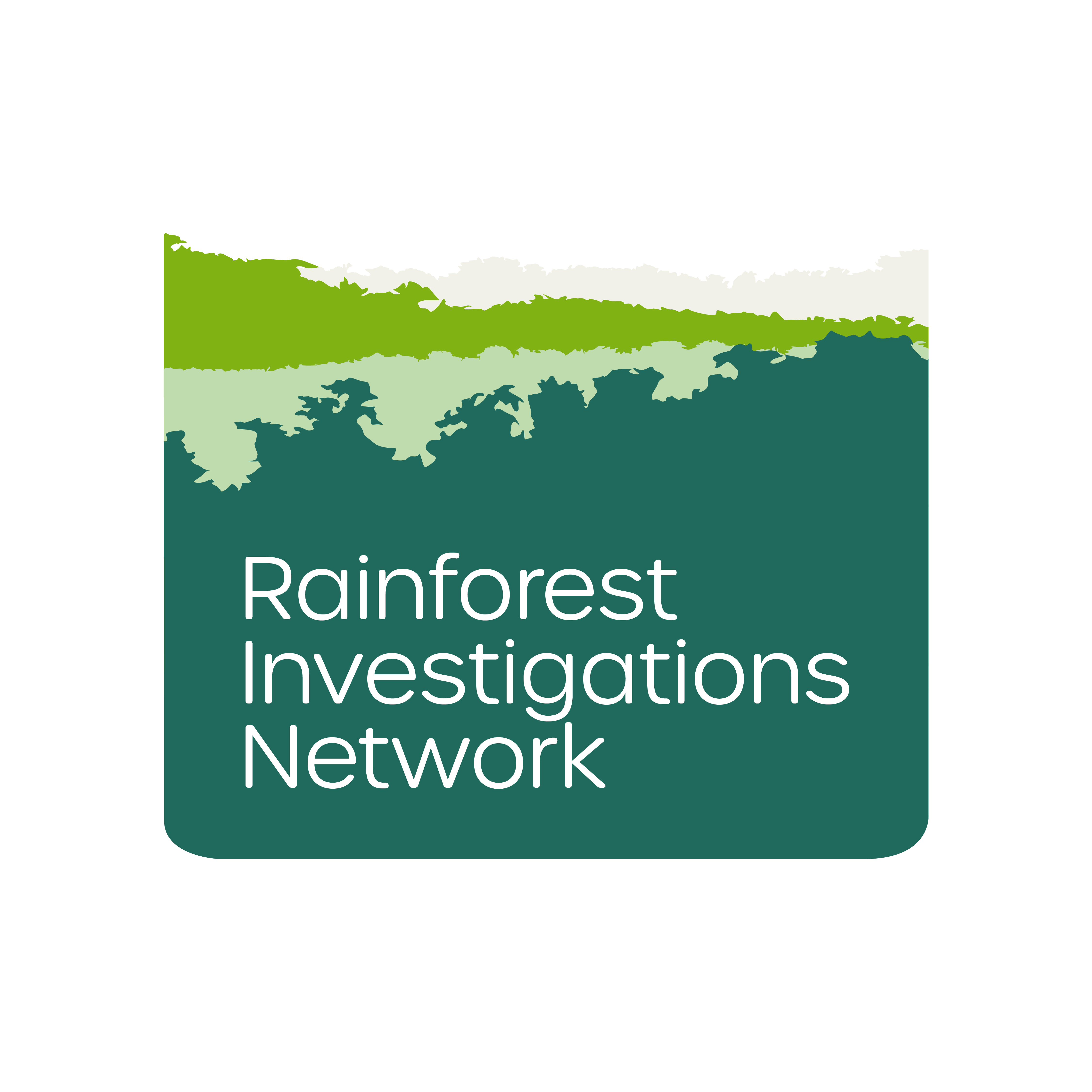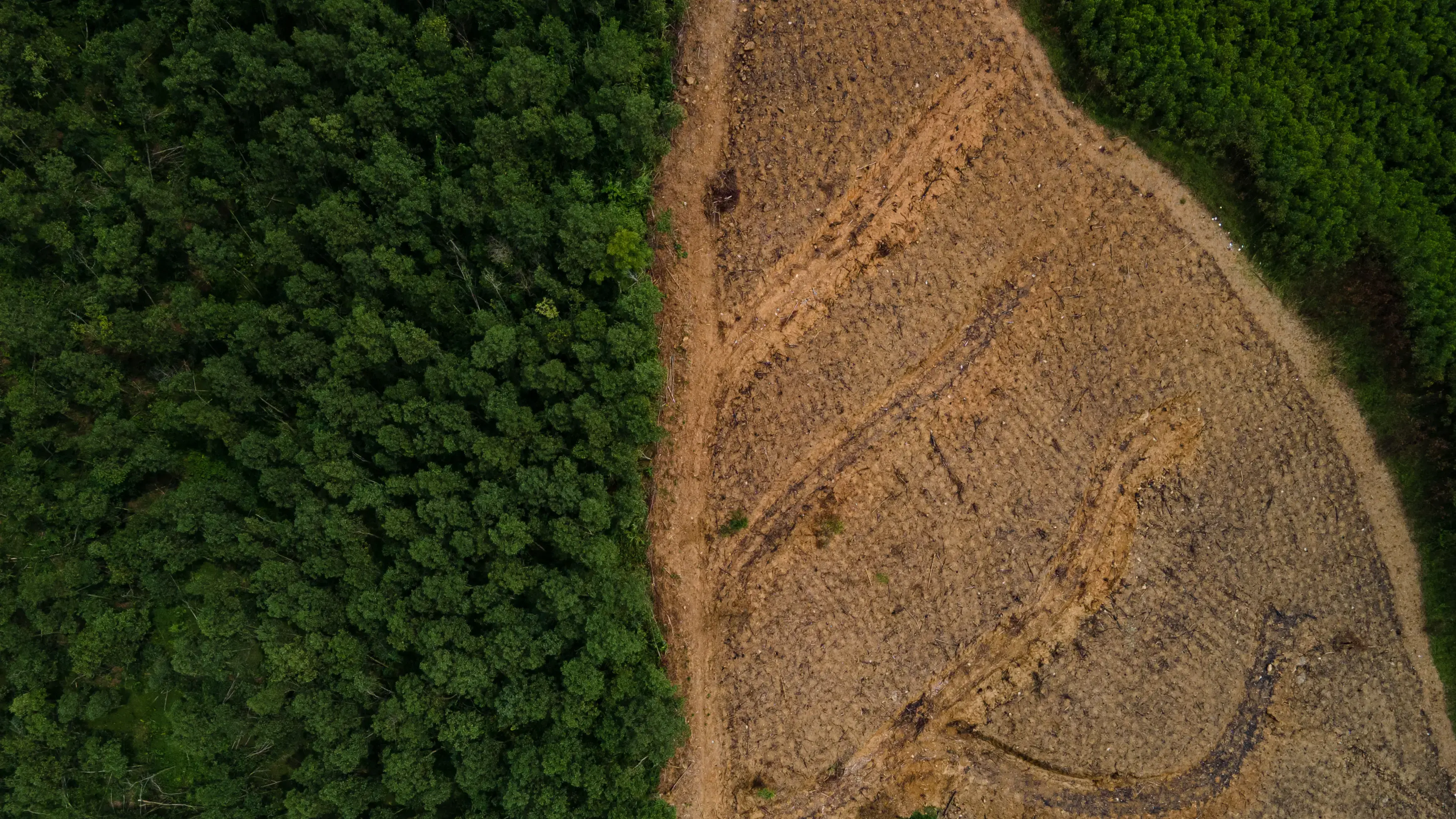
The country’s embrace of acacia plantations has lifted some smallholder households out of poverty. But it comes at a cost to the environment and even lives lost
QUANG NAM, VIETNAM ― The fast-growing and economical acacia has spread in Central Vietnam in response to the global call for wood pellets to replace coal-fired energy. But it has left biodiversity loss and, in some cases, even death in its wake.
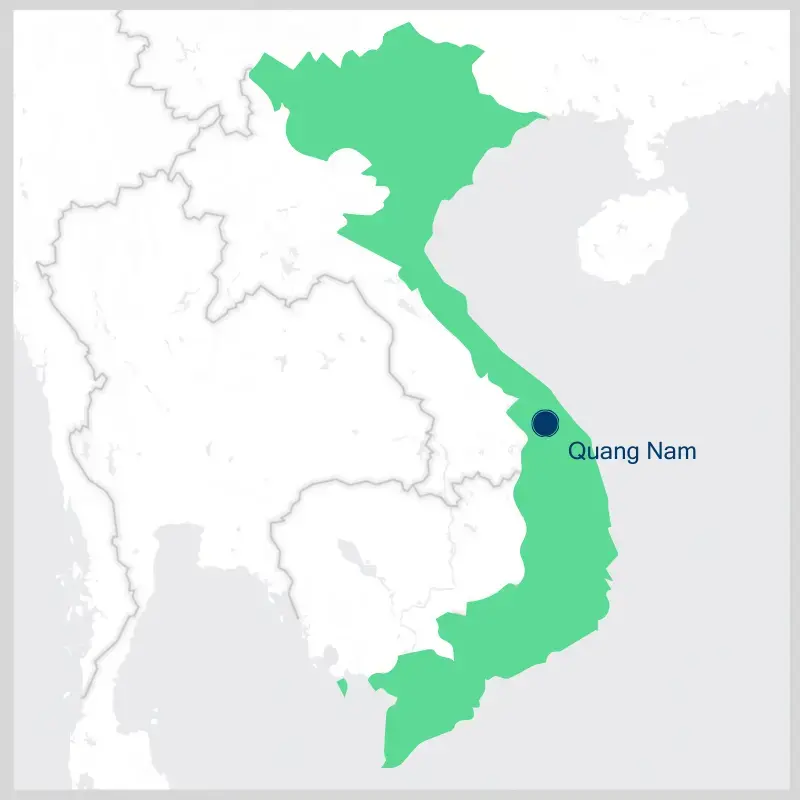
Ho Thi Hong, a Mnong ethnic woman in Bac Tra My district of Quang Nam province, lost eight family members in the deadly landslides 2020’s rainy season.
“That afternoon, a loud explosion signaled a landslide. It was followed by mud, trees, rocks and water crashing down on my village. The stream turned into a fierce flow, sweeping my husband and me away when we were in the fields near the forest,” she recalled.
“We were lucky to survive and were stuck in the forest for one night. When we returned to the village the next day, I no longer saw my children and grandchildren. Our house was also no longer there.”
Her village was buried under the mudslide from a nearby mountain ― part of which was covered in acacia.
Local authorities admitted that the catastrophe partly originated from the uncontrolled expansion of acacia plantations, which drive Central Vietnam’s economy, but are also linked to erosion and biodiversity loss.

As a nonprofit journalism organization, we depend on your support to fund more than 170 reporting projects every year on critical global and local issues. Donate any amount today to become a Pulitzer Center Champion and receive exclusive benefits!
Despite the human casualties from the landslide, acacia cultivation resumed three years later on the mountain, which abuts the graves of Hong’s loved ones.
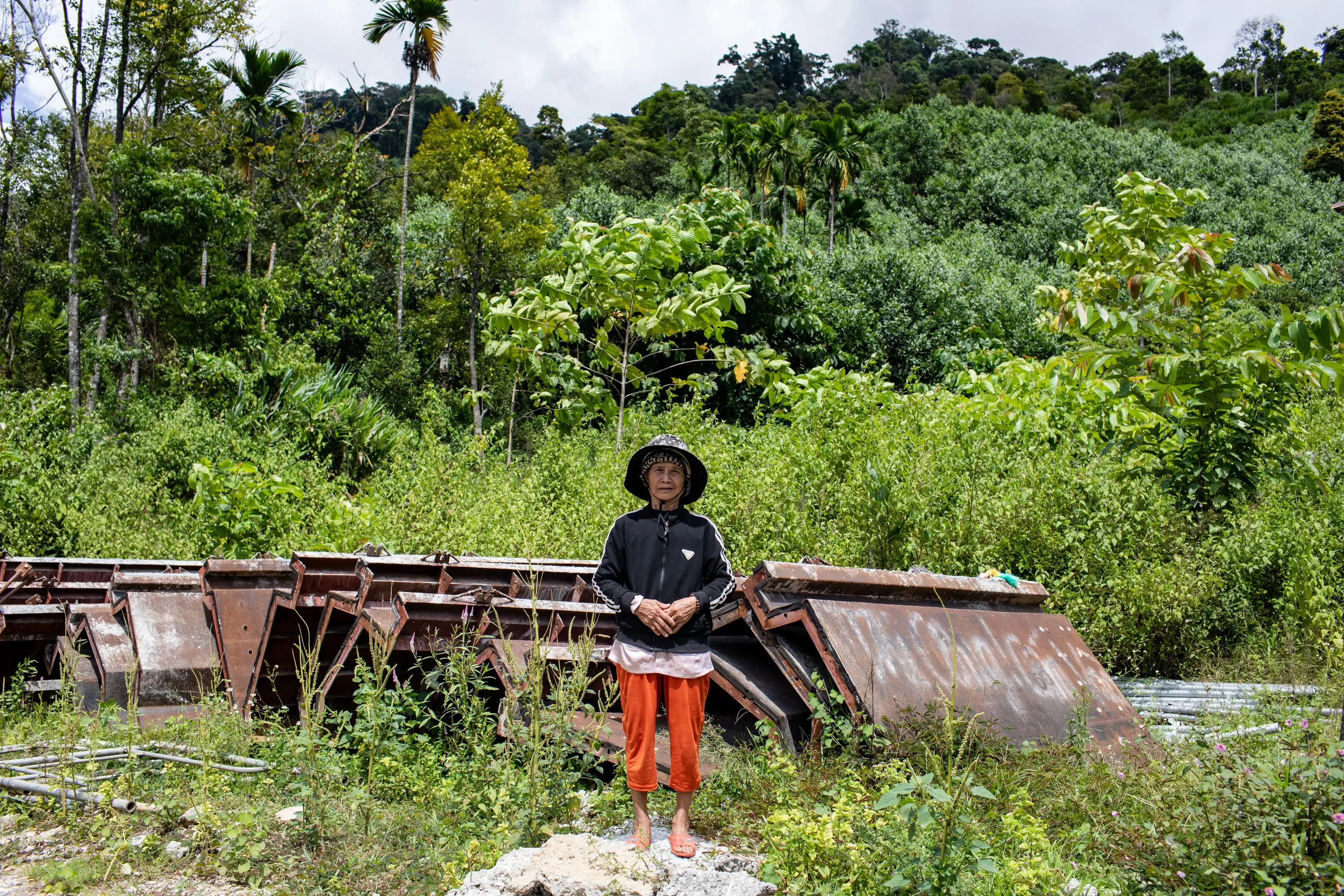
Hong had never seen an acacia tree before the fast-growing plants mushroomed around her village more than 30 years ago. Central Vietnam’s provinces ― such as Quang Nam, Quang Ngai, and Binh Dinh ― are today the epicenter of the country’s acacia plantations.
This is a result of high-level policies that began three decades ago, when the Vietnamese government implemented large-scale afforestation projects. The most notable were the US$68 million “Greening the Barren Hills Program,” which lasted from 1992 to 1997 and the $1.5 billion reforestation program that aimed to add 5 million hectares of forests from 1998 to 2010.
The programs intended to recover forests that were severely destroyed by bombs and the toxin Agent Orange dropped by the US military during the Vietnam War, as well as by encroachment and logging in the post-war era.
However, the programs have been criticized for their focus on establishing new plantations rather than supporting natural forest regeneration. The government allocated lands, known as production forest areas, to smallholder farmers who then planted monocultures of exotic tree species.
Several Australasian acacia species were introduced into southern Vietnam in the 1960s for forestry trials and plantation and then became the most popular trees used in forest plantations throughout the country. Vietnam is covered by the largest area of cultivated acacia in the world accounting for 65-85% of the nation’s 4.4 million ha of plantations.
Acacia became more widespread when the government classified it as a strategic crop for the country’s poverty alleviation efforts in the 2000s. The plan was even been sponsored by several countries and international organizations, including the Food and Agriculture Organization and the Australian government.
“They [acacia trees] have undoubtedly been a motor for local livelihoods but acacia plantations have replaced different land covers, including marginal crop fields, bushland, and natural forests,” said Nguyen Hai Van, a research fellow on forest and nature conservation policies at Wyss Academy for Nature at University of Bern, Switzerland.
Loveable trees
The acacia frenzy in Central Vietnam has been driven by rising prices following ever-higher demand for its wood.
The trees initially served paper and furniture manufacturers when they were first planted, but the past decade has seen a shift in plantations being used for wood pellets.
These are then primarily sourced for biomass power plants, which allows the industry involved to claim that the entire process is “renewable”–the emissions are comparatively lower than those from fossil fuels, although this is based on a number of assumptions that may not always apply.
Both Japan and South Korea have been the major importers of Vietnam’s wood pellets as both countries are looking at biomass as their pathways to “net-zero” carbon emissions.
“Acacia is easy to grow, has a short-growth cycle, and requires low capital. It’s perfectly suitable for poor households,” said Nguyen Su, a forest restoration expert from the Vietnam Afforestation and Reforestation Social Company – a nonprofit company that raises funds for forest planting and restoration projects using native tree species.
According to experts, the profit made from growing acacia trees is hundreds of times higher than agricultural tree varieties. It has helped many households improve their livelihoods while also supporting the regional rural economy and increasing national export revenue.
Acacia is also adored by investors and local governments because of its economic benefits.
Investors often choose fast-growing acacia trees, instead of native species, when launching afforestation projects that compensate for their activities involving forest clearance―including the construction of hydropower plants and other infrastructure development.
A range of afforestation projects have failed when planting native perennial plants because of unsuitable soil preparation and lack of care in the post-project period.“Acacia trees are tolerant of adverse soil and climate conditions, and only take four to five years to reach harvest time,” said Su.
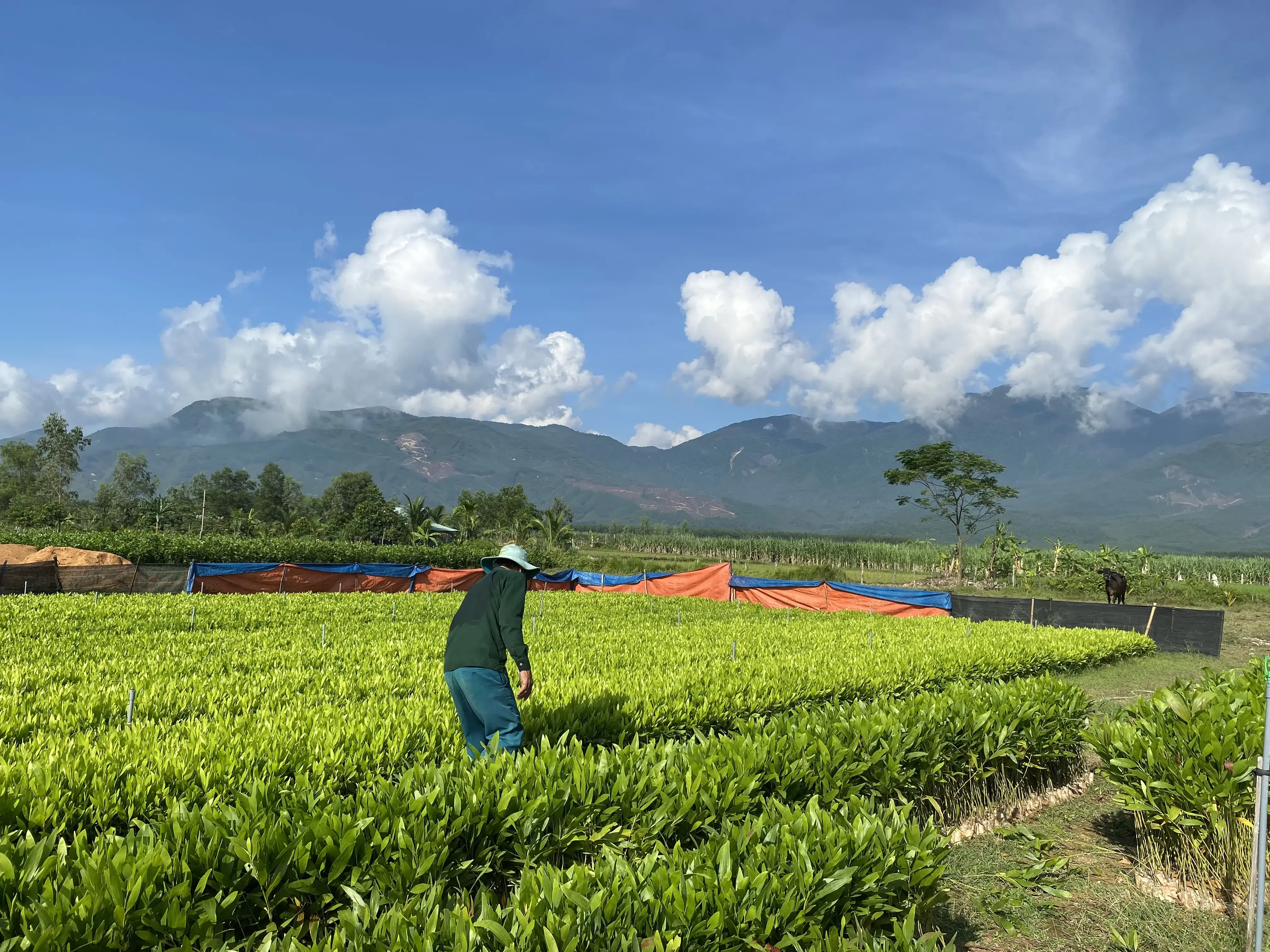
However, this yield comes at a significant cost that can’t be measured in dollars and dongs. To plant acacia trees, smallholder farmers have cut down natural forests to make way for cultivation and intensified deforestation on a massive scale.
“In the past, it was because we were so poor that we had to cut down the forest to have more land [for plantation,]” recalls an acacia farmer, Hai, adding that he is allowed to farm on a two-hectare plot within the forest production areas in Binh Dinh province.
“If we only relied on the land allocated by the state, how could our family with three children live? Many families here did not even access these lands.”
These days, many acacia plantations are the result of illegal encroachment on natural forests, and as such, are not issued the certificate of land use rights by the state. That is the reason that only a small number of acacia areas have Forest Stewardship Council (FSC) certification.
FSC certifies sustainable material sourcing from forests that are managed by strict environmental, social, and economic standards. Having the certificate of land use rights is a prerequisite for Vietnam acacia plantations to obtain FSC certification.
In an effort to increase the number of forest areas acquiring international forestry certification, the Vietnam Forest Certification Scheme (VFCS), established by the Vietnam General Department of Forestry in 2018, has collaborated with the Programme for the Endorsement of Forest Certification (PEFC).
The endorsement of VFCS by PEFC has facilitated adherence to international standards, enabling Vietnamese timber products bearing the joint VFCS/PEFC certification to access various markets, including the EU.
Notably, unlike the Forest Stewardship Council (FSC), this scheme does not explicitly specify the land use rights of the forests where the products originate.
FSC and PEFC have both come under fire in recent years for not being strict about their standards and have been accused of “greenwashing” timber in other countries.
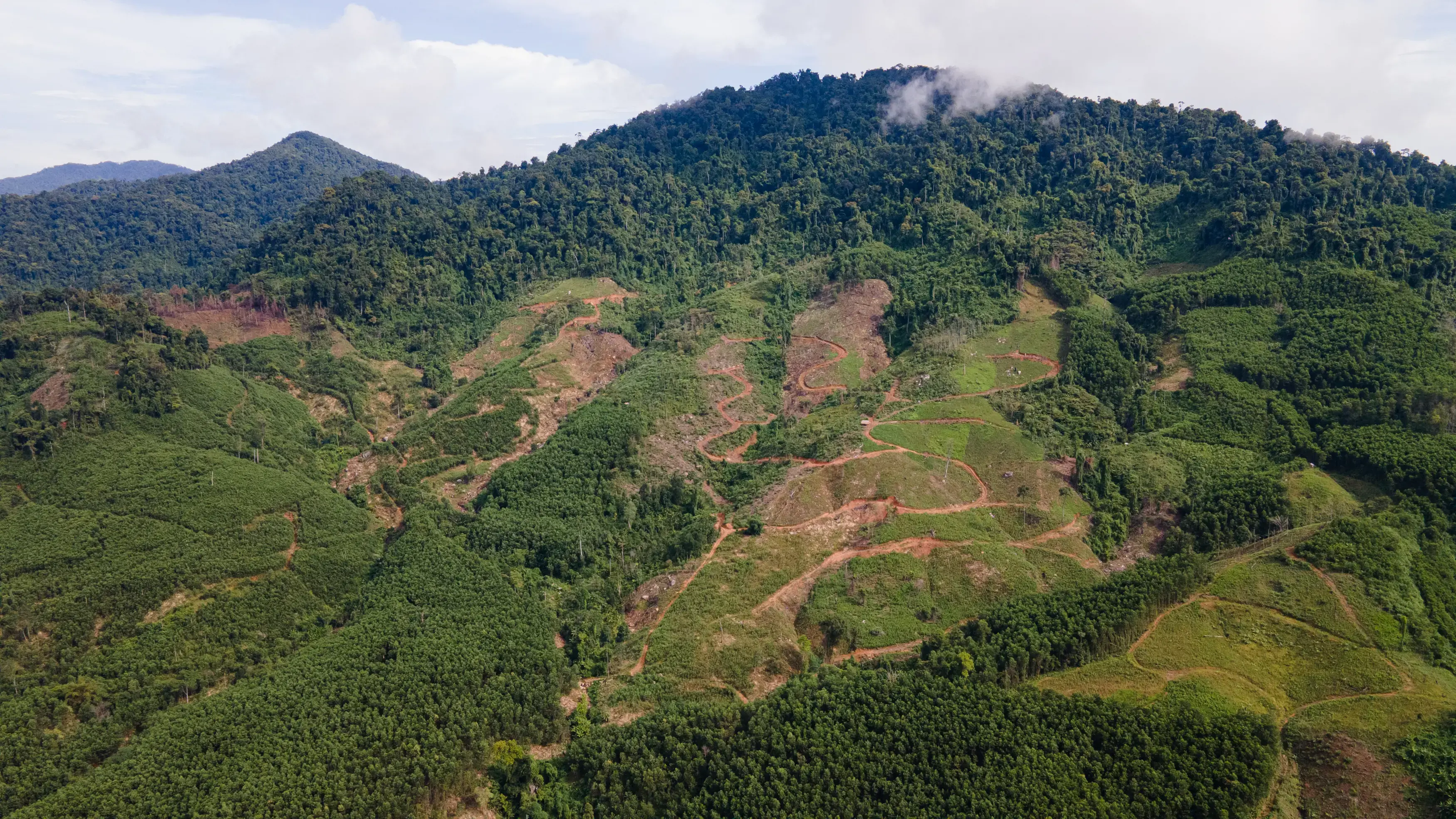
“Our research in some communes of Central Vietnam reveals that more than half of acacia plots in these areas, despite being used for over a decade, are yet to be officially certified due to the complicated history of forest-related land use change”, said Nguyen Hai Van.
“It thus is still the biggest obstacle for acacia smallholders’ eligibility, together with finance and other factors, to participate in any sustainable forest certification schemes.”
She surmises that the local authorities have been stuck with a dilemma. On the one hand, they cannot issue certificates for these areas that are in a “gray area” outside of the government’s land use planning because it could lead to a precedent of small-scale land grabs or further forest encroachment.
Yet it is also impossible to force local villagers to give up acacia and restore the forestland given how long it’s already been used for plantations. Still, there are no concrete solutions for the problem, as some local authorities tacitly accept the status quo land tenure arrangement: “untitled but not informal.”
Dangers of acacia
According to the Vietnam Forestry Institute, the extensive cultivation of acacia trees causes various ecological and environmental consequences.
The exotic trees are not friendly to native plant species as they outcompete nearby native vegetation. They have shallow root systems that enable them to rob moisture from other plants while degrading the underlying soil, which increases the risk of landslides, especially when they are planted along slopes.
This is precisely what happened to Ho Thi Hong, the Mnong woman who lost her family and home mentioned earlier. Disasters were reported in other Central Vietnamese provinces as well in 2020.
“The acacia forests cannot replace natural forests, especially in areas prone to natural disasters and climate change impacts like the Central region,” said Su, the forest restoration expert.
He pointed out the method of acacia cultivation and harvesting will accelerate wildfires and ultimately carbon emissions, as farmers often burn vegetation to clear land and supply nutrients for the tree’s next crop cycle. This practice has also led to exposed soils after harvest.
Groundcover with vegetation would normally prevent erosion during the rainy season when the acacias are mere saplings. Consequently, after only three to four crop cycles without rotation, the soil becomes completely depleted of nutrients.
Van, the research fellow on forest, adds that soil degradation tends to be compounded by the sloped terrain often used for wattle cultivation. This is compounded by the strong monsoon and cyclone systems that occur between September and December, which produce heavy rainfall in Central Vietnam.
Furthermore, compared to natural forests, known for their high species diversity and endemism (they live only in a very particular location), a monoculture plantation of acacia hosts precious little native flora or fauna and has very little direct value for conservation.
Monoculture plantations of acacia are believed by experts to be poor at sequestering carbon dioxide as well. Only natural forests, with diverse plant species, can do this job well.
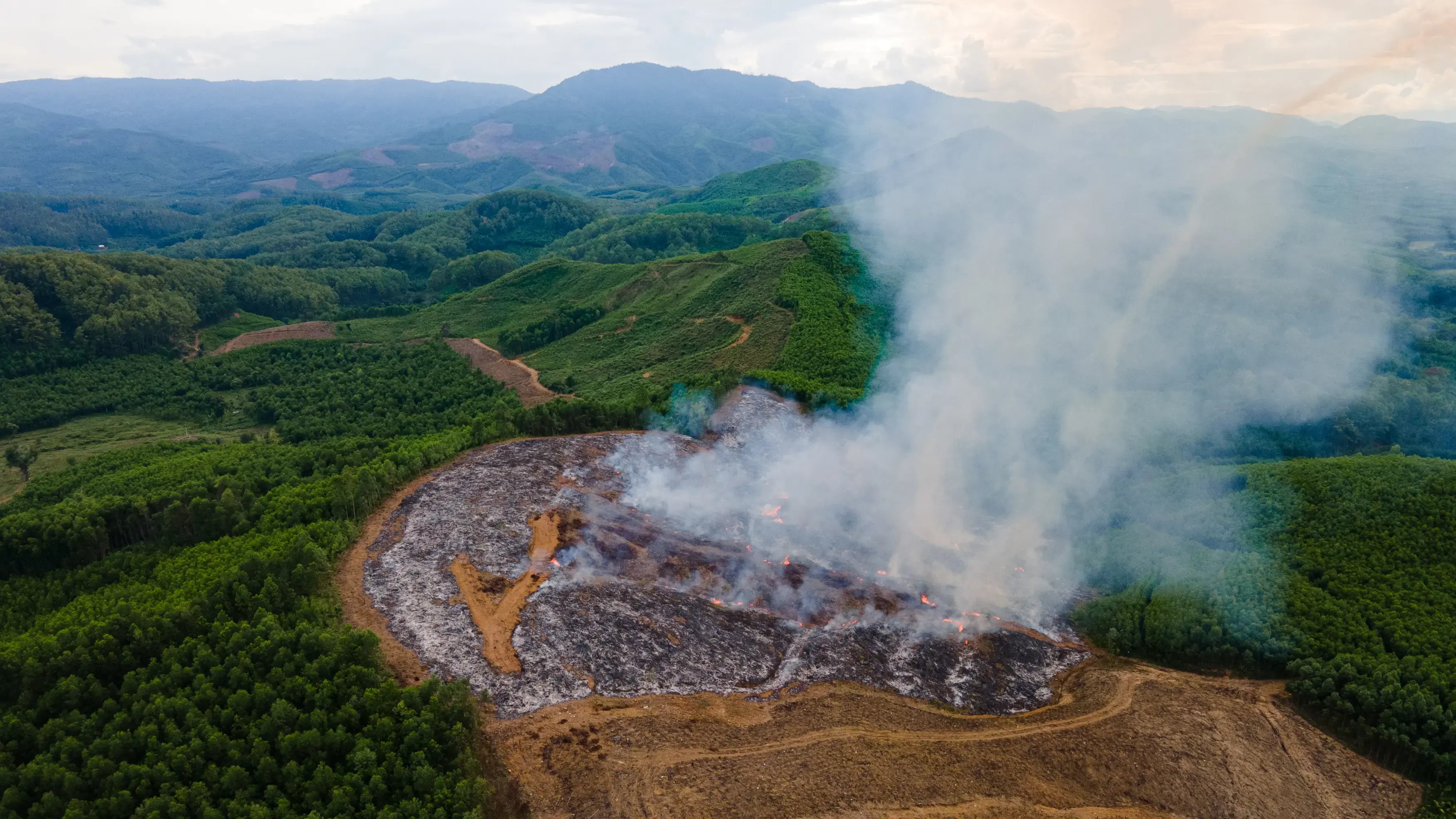
A recent study indicated that globally such land cover is 70% more effective than plantations at storing carbon, meaning that restoring them is an essential way to slow rising global temperatures.
There is perhaps an irony in clearing natural forests for the purposes of planting monocultures, which are then cut down and replanted to fuel international wood pellet demand. A demand premised on reducing carbon emissions in the energy sector.
Threat amidst prospect
The acacia farming hills are not shaken despite its severe environmental impact.
As there does not appear to be an end in sight to the Russo-Ukrainian war, the global sanctions against Russia’s oil and gas industries have sparked demand for wood pellets and chips used for fuel and power generation. The global effort to accelerate the green energy transition will likely also drive more interest in wood pellets used in generating biomass power.
Both of these forces are leading the EU to spend billions of dollars annually to subsidize wood-burning biomass energy.
Japan, on the other hand, is the biggest wood pellet buyer from Vietnam as part of its policy to use biomass for achieving a low-emission future.
Many of its companies in the sector retain long-term contracts with Vietnamese producers to meet its increasing demand for pellets, which is estimated to be about three times higher by 2030. Yet, the integrity of wood energy has never been fully acknowledged.
Climate scientists provided evidence that wood burning emits about 18% more carbon dioxide per kilowatt-hour of energy produced than coal combustion. Many studies also consistently indicate that harvesting immature trees for bioenergy increases greenhouse gas emissions that can then take between decades and centuries to offset.
Nguyen Hai Van has highlighted wood pellets as a means of converting waste and debris into green energy.
However, she raises concerns that while people often purchase wood pellets under the impression of making a sustainable choice, it actually contributes to a phenomenon known as transition leakage. This occurs when efforts towards a green transition in one country or sector result in costs being transferred to other countries or sectors.
“More evidence on cross-sector leakages associated with climate change solutions is necessary. It will serve as a crucial entry point for discussions on ‘loss and damage’ along with carbon governance—two of the most anticipated topics for discussion at approaching UNFCCC COP28,” she emphasized.
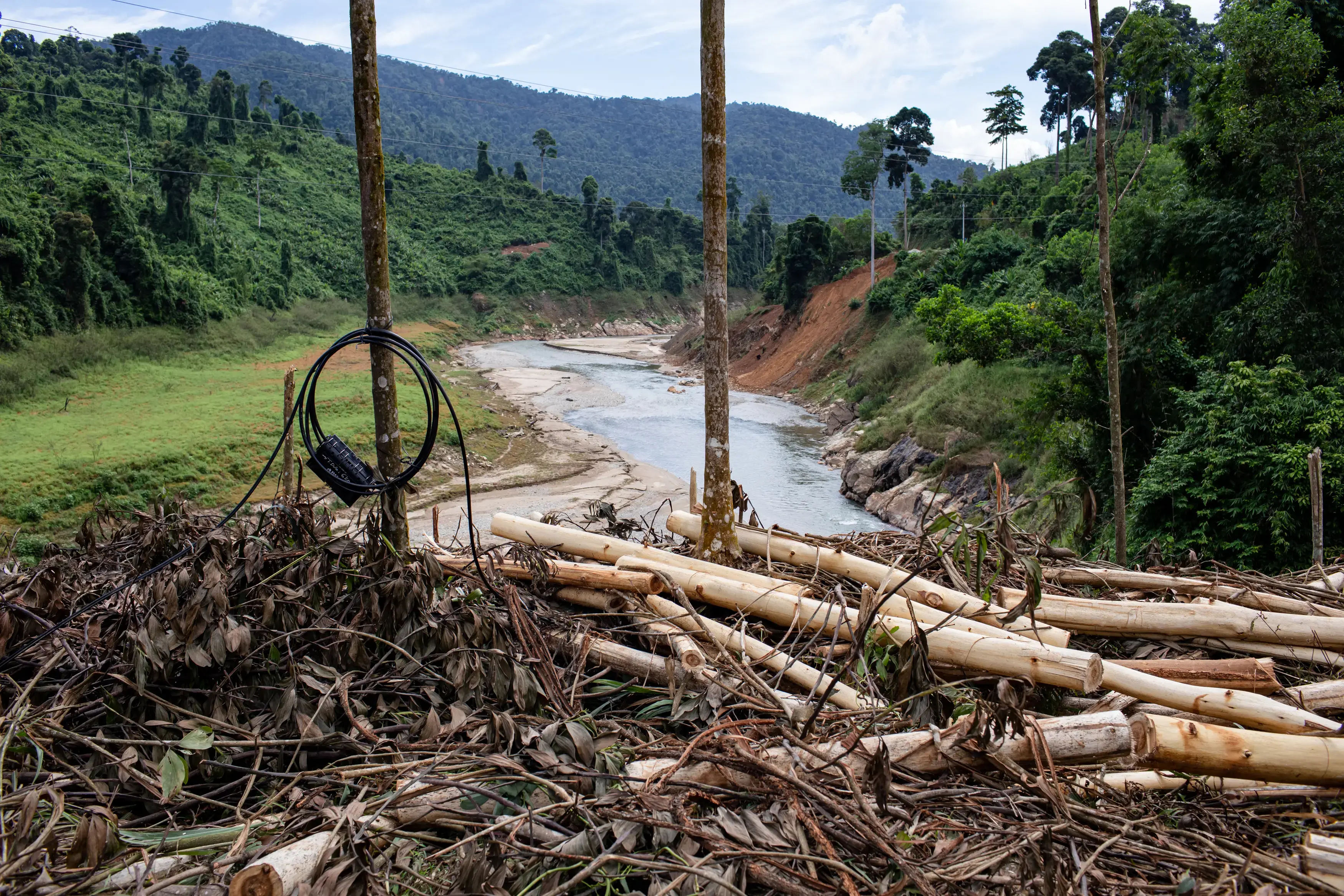
Investigations by environmental NGOs in the EU show wood pellet production can cause large clear-cutting of natural and old-growth forests, with evidence of thousands of whole trees being piled up at the mills.
In South Korea early last year, a report by SFOC and the Korea-based non-profit organizations identified high deforestation risks in the export supply chains of woody biomass from Vietnam and Indonesia destined for the East Asian country.
“This highlights an aspect of climate injustice. While Koreans benefit from the electricity produced by power plants impacting the environment, Vietnam bears the burden of deforestation and logging trees associated with the power generation activities of Korea”, said Hansae Song, Bioenergy & Land Use Program Officer of SFOC.
“First of all, biomass shouldn’t be treated as renewable. Providing excessive subsidies to biomass is not something that the South Korea government should do with the taxpayers’ money”, he added.
In April, 90 environmental NGOs in Japan and overseas called on the country to take measures against co-firing biomass plants, which activists say encourage deforestation in pellet-exporting countries. They also demand that Japan address carbon emissions from biofuels and incorporate the ensuing calculations into the country’s carbon accounting.
“In the long run, Japan will give up some of these costly and ineffective renewable energy strategies”, said Roger Smith, Japan Director at Mighty Earth, one of the organizations that signed the statement, “Co-firing of Biomass in Coal Plants or Conversion of Coal Power Plants to Dedicated Biomass Power Plants is Greenwashing.”
“The crucial question is that when they realize that this path is dead, how long will it take for Japan to shift course and if it takes too long, we suffer from worsened climate change.”
Many acacia farmers in Vietnam have felt the environmental threats too.
Years of intensive acacia farming have degraded soil and led to declining yields. Local farmers used to be able to harvest between 100 and 120 tons of wood per hectare a decade ago. Now they can only get two-thirds of that production.
With plummeting harvests, Hai, the farmer, estimates that he would have to grow acacia for two consecutive crop cycles, lasting five years each before he’d be able to turn a profit. He can’t earn supplemental income from other crops as nothing else manages to coexist with acacia under the plantation’s all-consuming canopy.
“Acacia used to feed my family, but in the future, it will leave us nothing to earn from,” said Hai.
Note: For personal safety reasons, the farmers, traders, and drivers are referred to by their first names.











